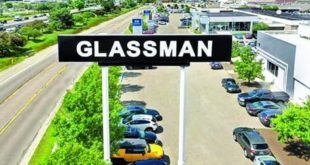
Most driving safety technology packages reduce insurance claims by significant percentages, according to a study released this week.
The Highway Loss Data Institute compared insurance claims on four 2013-2017 model year BMW crash-avoidance packages.
The packages included all or some of these technologies: forward collision warning, lane-departure warning, adaptive cruise control, lane-centering technology and front cross-traffic alert.
For each package the institute analyzed the impact on the rate of collision, property damage liability and bodily injury liability claims per insured vehicle year.
The study found the following:
- Forward Alerts package: 2 percent increase in collision claims, 5 percent increase in property damage claims, 11 percent increase in bodily damage claims
- Forward Alerts with automatic braking package: 5 percent reduction in collision claims, 11 percent reduction in property damage claims, 16 percent reduction in bodily damage claims
- Driving Assistance package: 6 percent reduction in collision claims, 27 percent reduction in property damage claims, 37 percent reduction in bodily damage claims
- Driving Assistance Plus package: 7 percent reduction in collision claims, 26 percent reduction in property damage claims, 29 percent reduction in bodily damage claims
“Three of the four crash-avoidance packages were associated with reductions in claim rates under the three coverages,” the study said.
Property damage and bodily injury liability claims are decreased when improved front crash preventions and adaptive cruise control technologies are present in a vehicle.
“The crash-claim frequency reductions for BMW’s Driving Assistance package are the largest we’ve seen from advanced driver-assistance systems, which suggests crash avoidance may be delivering bigger benefits as the technology improves,” Matt Moore, the institute’s senior vice president, said in the statement.
The study found that lane-centering technologies had little impact on the improvements.
“The important thing here is that both of the advanced systems were associated with large reductions in claim frequency and reductions in overall losses,” Moore said. “But the specific impact of adding lane-centering and a front cross-traffic alert isn’t clear.”
Joe Young, a spokesman for the institute, said lane-centering technology is meant to be used only on certain roads, which may explain why the data isn’t showing statistical differences.
The study collected the data of 6 million insured vehicle years from 2013 to 2017 — that’s the total count of years covered by insurance, not the number of vehicles. Young told Automotive News that these systems had been installed as far back as 2013 and recent model years were not included because “it takes time for claim data to accumulate.”


